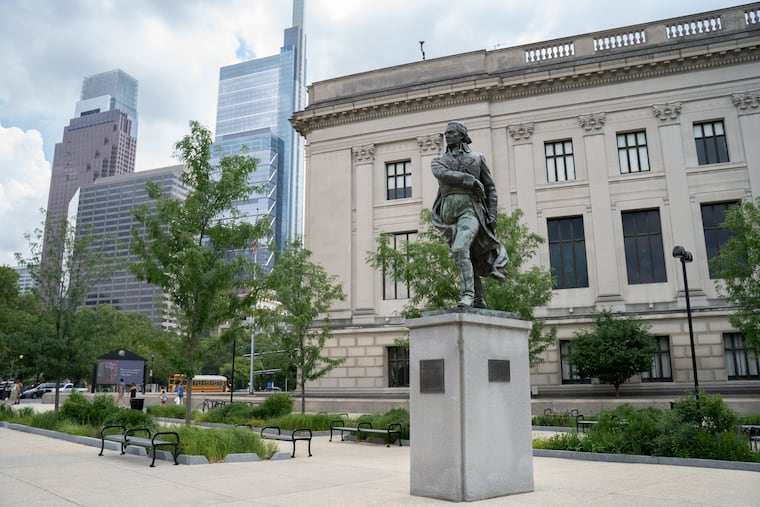What do Philadelphia, Venezuela, and Independence Day have in common?
Francisco de Miranda, a Venezuelan-born revolutionary leader and military hero with the Spanish Army, learned the ideals of freedom, liberty, and independence from the likes of George Washington.

What you see is a 10-foot-tall bronze statue of a man on the Parkway outside the Franklin Institute.
But what some don’t know is the political inspiration this man, considered “The Great Universal American,” took from the founding fathers to bring independence to Central and South America. Venezuela, the first colony in the Americas to declare separation from Spain, celebrates its independence July 5.
>> To read this story in Spanish, click here.
Francisco de Miranda, a Venezuelan-born revolutionary leader and military hero with the Spanish army, learned the ideals of freedom, liberty, and independence from the likes of George Washington, Alexander Hamilton, and Samuel Adams in Philadelphia during the 18th and 19th centuries. He fought in the American Revolutionary War.
For Venezuelans here, Miranda continues to have significance today, according to Juan Giarrizzo, president for Casa de Venezuela, a nonprofit that supports Philly’s South American nationals. When the group organizes protests — including against the regime of Nicolás Maduro — it is there, at the site of the statue, that they congregate. Miranda is Giarrizzo’s favorite historical figure.
“The figure is an icon that strengthens the Venezuelan identity in Philadelphia,” he said, “so, for us, it’s a demonstration that Miranda lives beyond his time."
Giarrizzo knows, too, that Venezuelan visitors to Philadelphia feel pride when they discover the sculpture of Miranda drawing his sword, and it inspires them to learn more about his relationship with the city.
The statue of Francisco de Miranda was gifted by the Venezuelan government to Philadelphia on July 1, 1977, to recognize the city’s bicentennial celebration. Venezuelan President Carlos Andrés Pérez joined Mayor Frank Rizzo during the dedication of the statue, when it was installed in a place of distinction, along the Benjamin Franklin Parkway.
“The statue represents Miranda as a friend to the United States, who fought in the American Revolution and spent his life fighting for the ideal of independence,” said Margot Berg, the public art director for the City of Philadelphia’s Office of Arts, Culture and Creative Economy.
The Association for Public Art produced an audio tour in 2013 of Miranda’s history, including that he died tragically, in isolation, in a “cold damp jail cell," punished for fighting against Spanish imperialism.
Venezuelans will celebrate the nation’s 208th anniversary of its independence at 3 p.m. Friday with a flag-raising at City Hall.